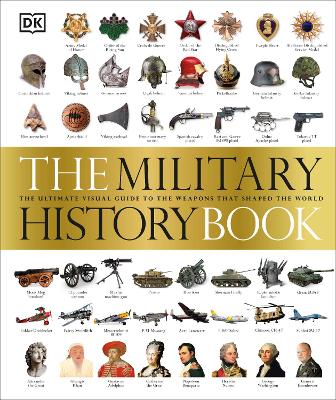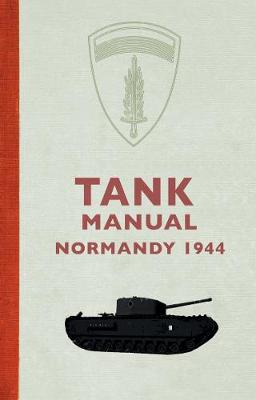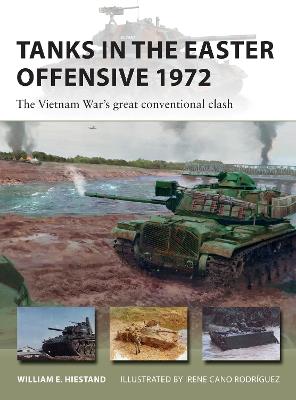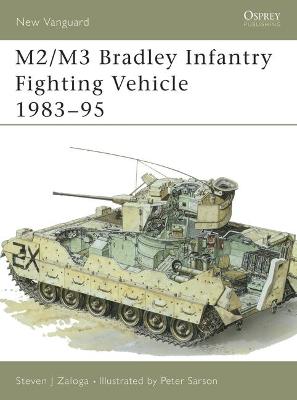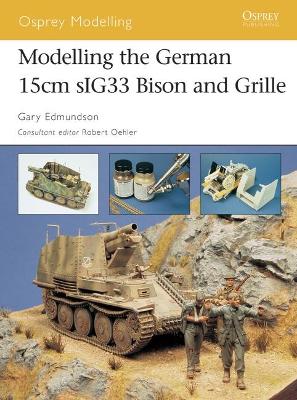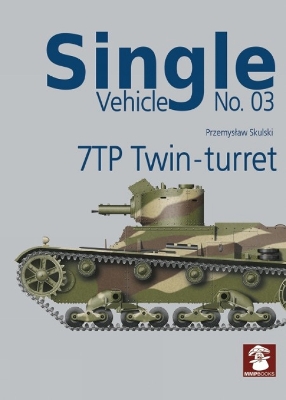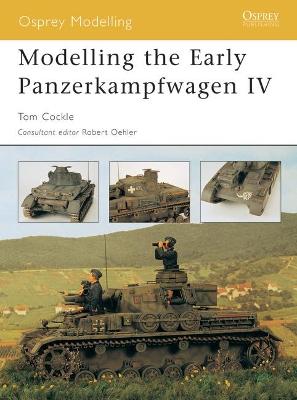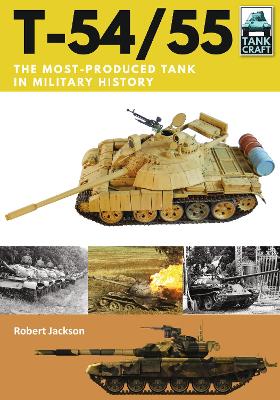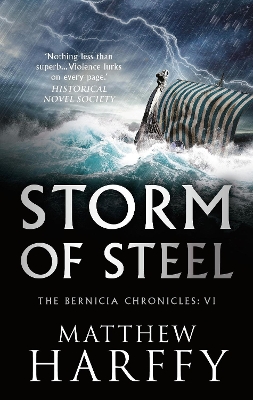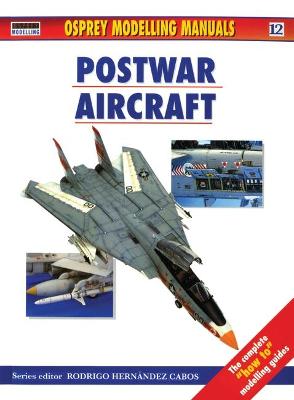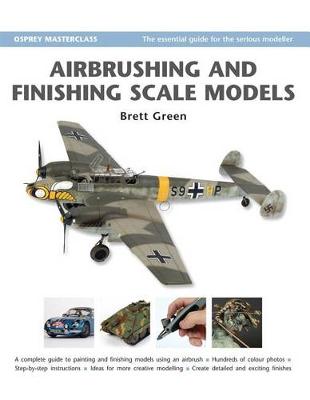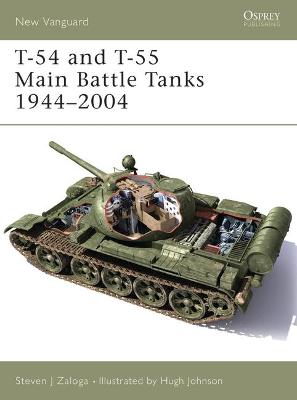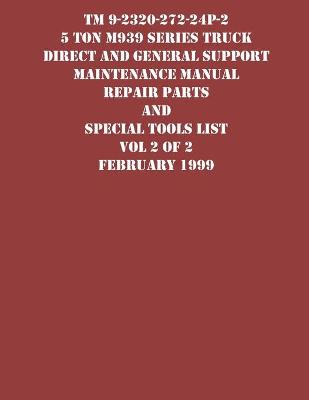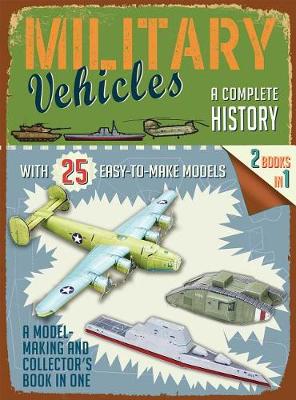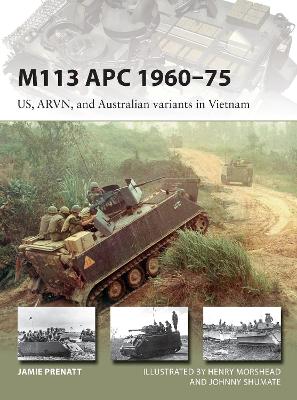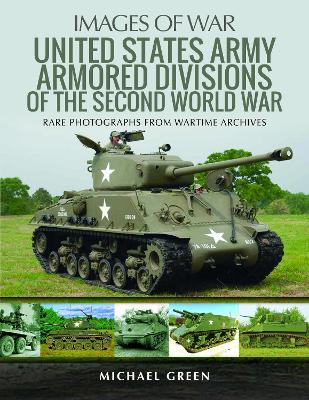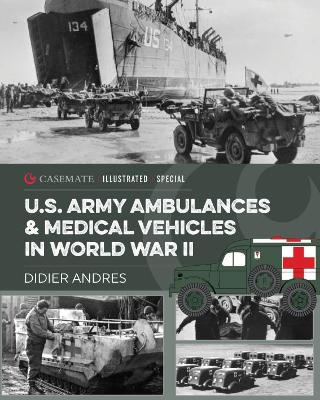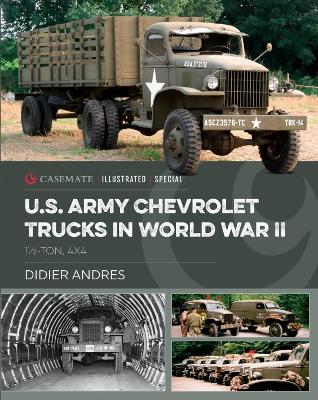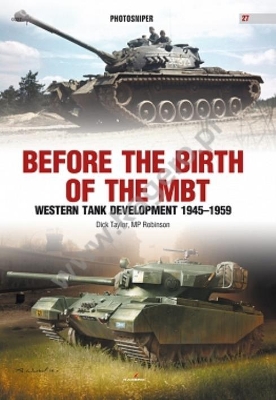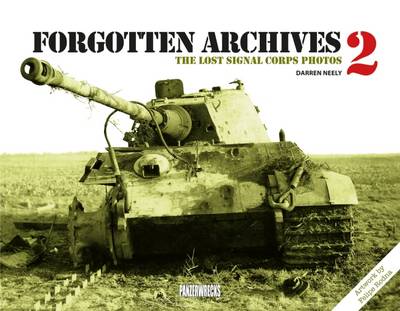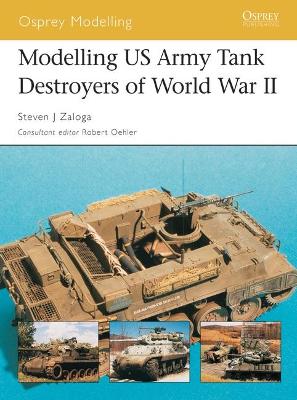A compelling visual guide to the history of the military!Travel through time and explore 5000 years of weaponry in stunning detail with this riveting military book - from the spears and swords of ancient times to the guns and grenades of modern warfare.This beautifully illustrated definitive military guide charts the evolution of battlefield technology. Here's what you'll find inside:- It includes objects taken from collections that are not available to the public or have never been photographed...
How do you aim a tank gun? What are the best tactics on the battlefield? How cramped was it inside a Second World War tank? How did it feel to take a hit from enemy fire? Allied victory in the Second World War was due in no small part to the tanks and their crews who fought after D-Day in 1944. In order to beat the effective Panzer tanks and overwhelm the occupying German forces in France, the Allied tanks arrived in their thousands by landing craft and even by glider. The Tank Manual gathers...
Tanks in the Easter Offensive 1972 (New Vanguard)
by William E Hiestand
This study explains how the armies of North and South Vietnam, newly equipped with the most modern Soviet and US tanks and weaponry, fought the decisive armored battles of the Easter Offensive. Wearied by years of fighting against Viet Cong guerillas and North Vietnamese regulars, the United States had almost completely withdrawn its forces from Vietnam by early 1972. Determined to halt the expansion and improvement of South Vietnamese forces under the U.S. "Vietnamization" program, North Vietn...
M2/M3 Bradley Infantry Fighting Vehicle 1983-95 (Osprey New Vanguard S., #18)
by Steven Zaloga
One of the most sophisticated armoured fighting vehicles in the world, the M2/M3 Bradley is the United States equivalent of the British Warrior, combining the role of personnel carrier with the formidable armament of a 25mm cannon and TOW anti-tank missiles. With a maximum road speed of 66kmh it also has a degree of manoeuvrability dreamed of by other armoured vehicles. In this book Steven Zaloga examines the different variants of the Bradley in detail and looks at the changing tactical requirem...
Modelling the German 15cm sIG33 Bison and Grille (Osprey Modelling, #19)
by Gary Edmundson
The Rheinmetall heavy Infanteriegeschutz 33 was the most powerful German support weapon at the beginning of World War II, and in January 1940, the first attempts were made to transform it to a tracked vehicle. An improved version, based on the Panzer II chassis, served in Rommel's Afrika Korps, and further alterations were made during the battle for Stalingrad in 1942. The Grille Ausf. H, the adaptation of the sIG 33 on the Czech Panzer 38(t) chassis, served from 1943 onwards with the schwere In...
Introducing the Single Vehicle series from Mushroom Model Publications - a new range of booklets for military modellers featuring original colour profiles, photographic details and scale plans in 1/35 scale, plus drawings from military technical manuals for individual single variant military vehicles. This third title covers the twin-turret variant of the 7TP (seven ton Polish) light tank of the Second World War. It was armed with two Ckm wz.30 machine guns. Prior to the outbreak of war in 193...
Modelling the Early Panzerkampfwagen IV (Osprey Modelling, #26)
by Tom Cockle
The Panzerkampfwagen IV has often been referred to as the 'Workhorse' of the German Army in World War II. This important weapon went through several upgrades and improvements and is the only German tank to have been produced continuously throughout the entire war. It has been an important subject for modellers for many years, with many kits available from the major manufacturers. This title will cover the whole gamut of this subject, featuring colour schemes and variants from the invasion of Pol...
During the Cold War, the T-54/55 series of tanks represented the most serious threat to Nato land forces in Europe. Available in huge quantities, it formed the core of the Warsaw Pact armoured warfare doctrine, which envisaged massed tank attacks against the weakest point in Nato's front-line defences. Yet the T-54/55 could be stopped by smaller numbers of tanks which had the benefit of better technology and training, as was demonstrated during the Yom Kippur War of 1973 when Israeli tanks deal...
AD 643. Anglo-Saxon Britain. A gripping, action-packed historical thriller and the sixth instalment in the Bernicia Chronicles. Heading south to lands he once considered his home, Beobrand is plunged into a dark world of piracy and slavery when an old friend enlists his help to recover a kidnapped girl.Embarking onto the wind-tossed seas, Beobrand pursues his quarry with single-minded tenacity. But the Whale Road is never calm and his journey is beset with storms, betrayal and violence.As the wi...
The beauty of modelling post-World War 2 aircraft can be summed up simply: jets, helicopters and missiles. Unlike World War 2 where almost everything was prop-driven, the post-war years are the years of the jet. In the post war years the jet has developed into a superlative power source enabling post-war designers to go to places barely imaginable in 1945. Attack helicopters, V/STOL (vertical/short take-off), variable geometry wings – and what weaponry. Modern aircraft are always groaning under...
Airbrushing and Finishing Scale Models (Modelling Masterclass)
by Brett Green and Robert Oehler
ALSO AVAILABLE AS AN E-BOOK. Brett Green details the prerequisites of airbrushing, including the different types of spray equipment and air sources available, offering advice on appropriate thinners, paint ratios and air pressures to ensure the most appropriate paint coverage across a range of different airbrushing applications. He then examines various airbrushing techniques across a wide range of models. Ten step-by-step, illustrated studies ranging from weathered military aircraft to pristine...
T-54 and T-55 Main Battle Tanks 1944-2004 (New Vanguard, #102)
by Steven Zaloga
The T-54 and T-55 tanks are the most widely manufactured tanks of all time. They have become ubiquitous to wars around the globe since the 1950s, starting with Hungary in 1956, and including the Arab-Israeli wars of 1967, 1973 and 1982, the Vietnam war of 1967-75, the Iran-Iraq War of 1980-88, the Afghanistan conflict, Operation Desert Storm, the Yugoslav Civil Wars, and the recent conflict in Iraq. This book will examine the roots of this prolific tank family, starting with the Sovet Army's fir...
From monster to master, discover the history of the tank in this heavily illustrated book. When the first tank weapon appeared on the killing fields of World War I, it was as if ancient superstitions were reborn in the modern industrial world. Soldiers on both sides of the war had never seen such monstrous, rolling machines that could withstand the bullets hurled at them. While the tank may have lost some of the mystical aura it first carried onto the battlefield, it is still one of the most f...
The M113 is the most widely used and versatile armoured vehicle in the world. Fielded in 1960 as a simple 'battlefield taxi', over 80,000 M113s would see service with 50 nations around the world and 55 years later, many thousands are still in use. In addition to its original role of transporting troops across the battlefield, specialized versions perform a multitude of other functions including command and control, fire support, anti-tank and anti-aircraft defence, and casualty evacuation. This...
German Reconnaissance and Support Vehicles, 1939-1945 (Images of War)
by Paul Thomas
United States Army Armored Division of the Second World War (Images of War)
by Green, Michael
The routing of the British and French Armies in May and June 1940 by the Wehrmacht's armoured divisions caused a major rethink by the US Army's senior leadership. The result was the formation of the two armoured divisions in July 1940; the first named 'Old Ironside' and second designated 'Hell on Wheels'. In 1941, a further three armoured divisions were created; the third (Spearhead), the fourth (remained unnamed) and the fifth called 'Victory'. The following year seven more were created, the s...
U.S. Army Ambulances and Medical Vehicles in World War II (Casemate Illustrated)
by Didier Andres
Of all the armies involved in World War II, the U.S. Army developed the most sophisticated system for the transport and treatment of injured and sick soldiers, pushing the boundaries of available technology to give their men the best chance of not only survival but a full recovery. Each infantry regiment had a medical detachment that was tasked with conserving the strength of the regiment by not only providing medical and dental treatment but also undertaking all possible measures to keep the re...
Between 1940 and 1945, large numbers of trucks of all categories were delivered to the U.S. Army by the Chevrolet Motor Division of General Motors. Over 160,000 of these trucks were the G-506 light four-wheel drive trucks - which became the standard 1 1/2-ton, 4x4 truck for both the U.S. Army and Army Air Corps during the war. In addition, many more thousands were delivered to Allied forces as part of the Lend-Lease program, including nearly 50,000 delivered to the Soviet Union. Tough, well-buil...
Before the Birth of the Mbt (Photosniper)
by Dick Taylor and M.P. Robinson
This book is intended to be the first in a short series looking at the major developments of battle tanks by the western nations in the period from the end of the Second World War to the present. During WW2 the tank came of age, and was probably the predominant land weapon of the period. However the tank was never perfected during the war, and the post-war decades have seen enormous resources expended on trying to do just that – to make the tank perfect. This of course is an impossible task, as...
Modelling US Army Tank Destroyers of World War II (Osprey Modelling, #13)
by Steven Zaloga
The US Tank Destroyer program was introduced as a cost-effective way of dealing with German armour. As opposed to most of the other combatant powers of WWII, the US did not want to use its tank battalions to confront opposing armour. Rather, specialised tank destroyer battalions, both towed and self-propelled, were raised to do the job. This book covers, among others, such types as the M18 Hellcat, the M3 / M5 Stuart Light Tank and the M4 Sherman and is packed with information useful to modeller...
